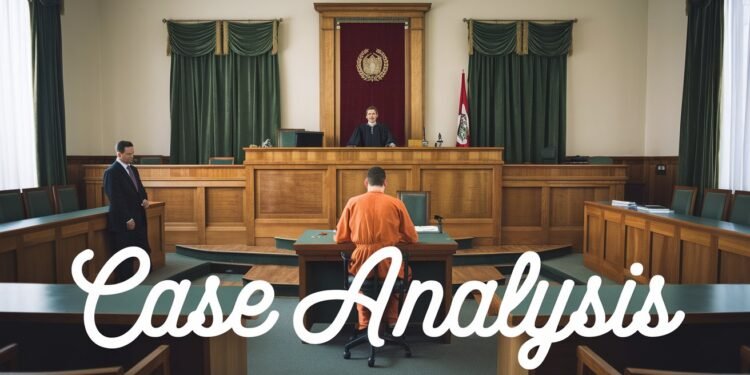Author: Mayank Kumar- 9th Sem (B.A.LL.B) (5 YEARS PLAN) University Law College,Hazaribagh
TIMELINE OF THE CASE:
In October 2007, Bajaj claimed unauthorized application of its patent by TVS at Madras High Court.
Bajaj prayed for an order of temporary injunction while the above suit was still pending.
- V. S. filed a suit against Bajaj for groundless threat of infringement in Madras High Court.
In February 2007, the Madras High Court granted a temporary injunction to Bajaj.
In May 2009, the Division Bench repealed the temporary injunction in response to T. V. S.’s prayer to repeal the same.
Due to this, Bajaj filed suit in the Hon’ble Supreme Court against the order of the Madras High Court.
The matter was settled outside court after withdrawing the several pending suits from various courts and for a. The two companies entered into a settlement agreement and put the dispute to rest.
LAWS INVOLVED:
Sections 64, 106, 107 and 108 of the Patents Act, 1970
FACTS OF THE CASE:
Two suits were involved in this case. The first one involved Bajaj Auto Limited filing a suit in the Madras High Court under Section 108 of the Patents Act, 1970 against T.V.S. This was filed to obtain a permanent injunction against TVS to prevent it from using Bajaj’s patented 125-CC Flame engine. Bajaj claimed that T. V. S. ‘s CCVTi technology used in the 125 – CC Flame engine was a replica of its DTS-I technology. With the exception of the three-valve component in the product, it was prima facie similar to the applicant’s patented product.
While this suit was pending, Bajaj prayed for an order of temporary injunction. T. V. S. filed a subsequent suit against Bajaj Auto Limited in the Madras High Court on the basis of the groundless threat of infringement under Section 106 of the Patents Act.
The Madras High Court issued the temporary injunction prayed for by Bajaj. The order stopped T. V. S. from completing pending orders and producing fresh models for the duration of the injunction. In response to this, T. V. S. requested for the repealing of this injunction. The Division Bench of the Madras High Court agreed to this and later repealed it, for which an appeal was filed in the Hon’ble Supreme Court by Bajaj, against the order of the Madras High Court Division Bench. The decision of the Madras High Court was repealed.
ISSUES:
Whether T. V. S. infringed the patent of Bajaj Ltd.?
Whether improvements made on patented technology can be used without infringing the original patent?
Whether the Defendants infringed the patent or combination even though it made some improvements to the main patented article?
Whether the patent of the applicant was valid and still subsisting?
Whether there were similarities in the design of TVS flame with the patent of Bajaj motors?
Whether the grant of the injunction was necessary to protect the rights of the applicant under the statutory provision
Whether the respondents were unjustly threatened only for the purpose of obtaining an unjust monopoly over the market?
ARGUMENT BY BOTH SIDE:
The plaintiff (Bajaj) claimed that the patented technology was a new invention and fell under the ambit of the definition of ‘an inventive step’. Thus, the technology patented was not prior art and as a result, the injunction could be sustained. It was also contended that Bajaj’s invention came into the market three years before T. V. S’s product had already achieved commercial success.
The defendant, T. V. S., claimed that the technology used in this case was prior art, since it was used before in a US Honda Patent, the patent ought not to have been granted to Bajaj in the first place. In addition to this, Bajaj’s claim was for two spark plugs with two valves, and T. V. S. ‘s design included two spark plugs with three valves for which it held a license. Thirdly, Bajaj’s invention was not new and novel as held under the rules set by Bishwanth Prasad Radhey Shyam v. H. M. Industries AIR 1982 SC 1444. Lastly, they claimed that the validity of the patent could be challenged.
HELD BY COURT
The court held that if the exact technological combination as patented was used by TVS then it could have led to infringement but there were improvements that were made and that instead of two, three valves were used and thus this wasn’t infringement, the court further held that if there is a slightest variance and modification in the technology used and if there are different combinations used to achieve the same result then it is not infringement.
The court relied on the case of improver corporation and ors. V. Remington Consumer Products and Ors to reach to the conclusion.
The court also widened the scope of infringement of trademark, patent and copyright. Court observed that the matters of intellectual property rights hold important aspects and thus speedy disposal should be made. It further gave guidelines to the lower courts that the matters relating to intellectual property shall be heard on day to day basis and should be resolved within two to three months. Court further passed direction that all tribunals and lower courts have ton strictly and punctually comply with this direction.
ANALYSIS
The Hon’ble Supreme Court expressed displeasure at the pendency of the case while it was before the Madras High Court at the interloculary level. The suit was filed in the year 2007, and not even a written statement was filed.
The Hon’ble Supreme Court stated that as observed in the case of M/s Shree Vardhman Rice and Gen Mills v. M/s Amar Singh Chawalwala (2009) 10 SCC 257, matters connected to intellectual property were to be decided expeditiously by the trial court rather than enduring the long process of granting and refusing injunctions.
Thus, without analysing the merits of the case, the Supreme Court ordered the Defendant to file a written statement as soon as possible. In addition to this, it ordered the Madras High Court to hear the case every day until it is disposed of, and that no order for adjournment would be granted. The deadline for the same was the 30th November, 2009.
It also directed that a receiver be appointed, who would be tasked with tracking T. V. S.’s sales until the suit was pending. The Supreme Court then dismissed the appeal.
If the issue was whether a feature embodied in an alleged infringement which fell outside the primary, literal or a contextual meaning of a descriptive word or phrase in the claim (a variant) was nevertheless within its language as properly interpreted, the court should ask itself the following three questions:
Does the variant have a material effect upon the way the invention works? If yes;, the variant is outside the claim. If no –
Would this (i.e. that the variant had no material effect) have been obvious at the date of publication of the patent- to a reader skilled in the art. If no, the variant is outside the claim. If yes –
Would the reader skilled in the art nevertheless have understood from the language of the claim that the patentee intended that strict compliance with the primary meaning was an essential requirement of the invention. If yes, the variant is outside the claim.
The Court subsequently in para 54 observed that:
It is also clear as per the decisions, for the purpose of deciding the novel features to constitute pith and marrow a purposive construction has to be given in order to make it essential requirement of the invention that any variant would follow outside the monopoly even if it could not have material effect upon the working of invention.
The court in paragraph 69 emerged following principles:
The validity of a patent can be challenged in a suit on various grounds of revocation as set out under Sections 64 and 107 of the Patents Act.
For the grant of interim injunction in a patent matter, the prima facie validity of the patent should be shown and also the prima facie infringement should be proved apart from the availability of balance of convenience and irreparable loss.
If the patent is a new one, the mere challenge at the Bar would be quite sufficient for the refusal of an interim injunction as compared to a fairly old patent.
Even in IPR cases, apart from prima facie case, the balance of convenience and irreparable injury, the mere registration of the patent alone would not be sufficient and the Court must look at the whole case i.e. the strength of the case of the plaintiff and the strength of the defendant.
Irrespective of the examination and investigation made under Sections 12 and 13 of the Patents Act, no presumption can be drawn as to the validity of the patent and whether the application for revocation of the patent is pending and when serious controversy exists as regards the existence of an invention based on prior art, the Court should be slow in granting the injunction
CONCLUSION:
The Supreme Court’s role in this case broadened the ambit of trademark, patent and copyright infringement, and it was observed that matters concerning IPR hold high significance, due to which they ought to be disposed of speedily. Further, it provided guidelines to lower courts, an important one being, intellectual property matters shall be heard on a day-to-day basis and should be resolved within a span of two to three months and that this order would have to be strictly and punctually complied with by all lower and tribunal courts. Only circumstances beyond the control of parties would justify an adjournment of the hearing beyond the following day.



